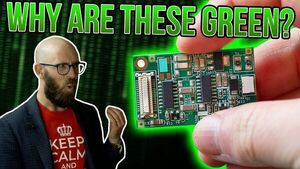2022-03-17 - Nº 359
Editorial
Esta é a Newsletter Nº 359 que se apresenta com o mesmo formato que as anteriores. Se gostar da Newsletter partilhe-a!
Todas as Newsletters encontram-se indexadas no link.
Esta Newsletter tem os seguintes tópicos:
Faz hoje anos que nascia, em 1834, o engenheiro e fabricante pioneiro de automóveis alemão Gottlieb Daimler. ele inventou o primeiro motor de combustão interna de alta velocidade, operando a até 900 rpm (1883) e um carburador (1885) para misturar gasolina e ar. A mota que construiu em 1885 foi talvez a primeira do mundo. Foi a primeira do mundo quando, com Wilhelm Maybach, construiu um automóvel de quatro rodas em 1886, capaz de atingir uma velocidade de 11 mph. Depois de desenvolver uma caixa de quatro velocidades e uma correia de transmissão para transferir a potência para as rodas, começaram o fabrico. Em 1890 fundou a Daimler-Motoren-Gesellschaft, que produziu a Mercedes (1889), fundindo-se mais tarde na Daimler-Benz & Co. em 1926. A Zeppelin utilizou motores Daimler para os seus dirigíveis.
Faz também hoje anos que nascia, em 1849, o inventor e industrial norte-americano Charles Francis Brush. Ele concebeu uma lâmpada de arco eléctrico e um gerador que produzia uma tensão variável controlada pela carga e uma corrente constante. Foi adoptada em todos os Estados Unidos e no estrangeiro durante a década de 1880. A luz de arco precedeu a lâmpada incandescente de Edison em uso comercial e era adequada para aplicações onde era necessária uma luz brilhante, tais como luzes de rua e iluminação em edifícios comerciais e públicos. Montou o seu primeiro dínamo no Verão de 1876, resultando numa patente para a sua Melhoria em Máquinas Magnetoeléctricas, emitida a 24 de Abril de 1877 (US No. 189997). Desenvolveu então uma luz de arco que era regulada por uma combinação de meios eléctricos e mecânicos limitados por uma "embreagem anelar". O seu sistema foi utilizado pela California Electric Light Co. para a primeira estação geradora central dos EUA (1879).
Por fim, faz hoje anos que nascia, em 1948, o escritor americano-canadiano de ficção William Gibson. Sendo pioneiro do subgénero de ficção científica conhecido como ciberpunk. Iniciou a sua carreira de escritor no final dos anos 70, os seus primeiros trabalhos foram noir, histórias quase futuras que exploravam os efeitos da tecnologia, cibernética, e redes de computadores nos seres humanos - uma "combinação de baixa vida e alta tecnologia" - e ajudaram a criar uma iconografia para a era da informação antes da ubiquidade da Internet nos anos 90. Gibson cunhou o termo "ciberespaço" para "tecnologia digital generalizada e interligada" no seu conto "Burning Chrome" (1982), e mais tarde popularizou o conceito no seu aclamado romance de estreia Neuromancer (1984). Estas primeiras obras de Gibson's foram creditadas com "renovação" da literatura de ficção científica nos anos 80.
Em 1950 era anunciado por cientistas na Universidade da Califórnia em Berkeley um novo elemento radioactivo, elemento 98, denominado "califórnio". Este é um elemento químico sintético da série actinídea do Grupo IIIb da tabela periódica, isótopo califórnio-245. Os cientistas Stanley G. Thompson, Kenneth Street, Jr., Albert Ghiorso, e Glenn T. Seaborg produziram-no bombardeando o curium-242 (número atómico 96) com hélio-iões no ciclotrão de 60 polegadas. Desde então, foram criados isótopos de vida mais longa, incluindo o califórnio-251 com uma semi-vida de 800 anos, e quantidades de microgramas de compostos tais como o oxicloreto CfOCl, o óxido Cf2O3, e o tricloreto CfCl3. Também o califórnio-252, com uma meia-vida de 2,65-anos, tem aplicações industriais e médicas como uma fonte pontual muito intensa de neutrões. Utilizado como emissor de neutrões e para analisar o teor de enxofre do petróleo e para medir o teor de humidade do solo.
Em 1958, os Estados Unidos lançaram o satélite Vanguard I, do Cabo Canaveral, Florida. O satélite de 1,5 Kg foi o primeiro a ser alimentado por energia solar, levava um transmissor de rádio e orbitava a cada 107,9 minutos. Esta foi a entrada tardia dos E.U.A. na Corrida Espacial, o seu segundo lançamento bem sucedido de satélite, após os dois sucessos soviéticos com os seus satélites Sputnik I (83,6 Kg) lançados a 4 de Outubro de 1957 e Sputnik II (508,3 Kg) lançado a 3 de Novembro de 1957. Para o Vanguard I, os EUA em apenas 2 anos, 6 meses e 8 dias tinham desenvolvido de raiz um veículo de lançamento completo de alto desempenho em três fases, um sistema mundial de rastreio de satélites altamente preciso, uma instalação de lançamento adequada e instrumentação de alcance. O Vanguard I foi lançado durante o Ano Geofísico Internacional, e continua a ser o satélite mais antigo ainda em órbita.
Na Newsletter desta semana apresentamos diversas noticias, artigos científicos, projetos de maker e alguns vídeos interessantes. É apresentado o livro "Isomorphism -- Mathematics of Programming".
 João Alves ([email protected])
João Alves ([email protected])
O conteúdo da Newsletter encontra-se sob a licença  Creative Commons Attribution-NonCommercial-ShareAlike 4.0 International License.
Creative Commons Attribution-NonCommercial-ShareAlike 4.0 International License.
Novidades da Semana
Outras Notícias
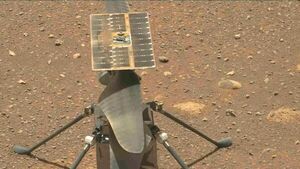
NASA Extends Ingenuity Helicopter Mission
"With its recent 21st flight complete, the Red Planet rotorcraft is on its way to setting more records during its second year of operations. NASA has extended flight operations of the Ingenuity Mars Helicopter through September. In the months ahead, history’s first aircraft to operate from the surface of another world will support the Perseverance rover’s upcoming science campaign exploring the ancient river delta of Jezero Crater. Along the way, it will continue testing its own capabilities to support the design of future Mars air vehicles. The announcement comes on the heels of the rotorcraft’s 21st successful flight, the first of at least three needed for the helicopter to cross the northwest portion of a region known as “Séítah” and reach its next staging area. “Less than a year ago we didn’t even know if powered, controlled flight of an aircraft at Mars was possible,” said Thomas Zurbuchen, the associate administrator of NASA’s Science Mission Directorate." [...]

STMicroelectronics adds space-saving, 20MHz, low-offset op amp in high-performance 5V family
"The STMicroelectronics TSV772 dual operational amplifier (op amp) combines high accuracy, low power consumption, and the option of an extremely small 2.0mm x 2.0mm DFN8 package. Extending ST’s high-performance 5V op-amp family, the TSV772 has rail-to-rail inputs and outputs, 20MHz gain-bandwidth (GBW), and is unity-gain stable. With a slew rate of 13V/µs, 7nV/√Hz input noise density, and 4kV ESD capability (HBM), the TSV772 is a strong all-round performer. The maximum input-offset voltage of 200µV (at 25°C) ensures accurate handling of low-amplitude signals. The inherent accuracy also saves using expensive, precision external resistors and helps avoid trimming or calibrating circuits in production. The TSV772 is characterized for an output capacitance of 47pF, simplifying use as an A/D converter input buffer." [...]
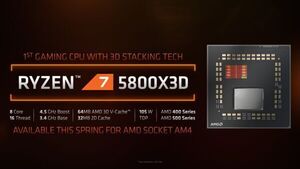
AMD Launches the Ultimate Gaming Processor, Brings Enthusiast Performance to an Expanded Lineup of Ryzen Desktop Processors
"Today, AMD (NASDAQ: AMD) announced the pricing and availability of the AMD Ryzen™ 7 5800X3D processor. At the cutting edge of innovation and gaming performance, the AMD Ryzen 7 5800X3D processor is the first Ryzen processor to feature AMD 3D V-Cache™ technology. With this industry-leading technology, the 5800X3D delivers 15% more gaming performance compared to processors without stacked cache technology1, making it the world’s most advanced desktop gaming processor2. AMD is also announcing a new stack of Ryzen 7, 5, and 3 Series processors and expanded chipset compatibility, giving PC enthusiasts even more options for creating truly customized gaming experiences. “Whether you’re an early adopter seeking the ultimate in gaming performance with the first Ryzen processor featuring AMD 3D V-Cache technology or a new gamer building your first rig, you can find a best-in-class experience with AMD,” said Saeid Moshkelani, senior vice president and general manager, Client business unit, AMD. “With today’s announcement AMD is offering users the power of choice by bringing leadership gaming performance to all levels of system builds.” AMD Ryzen 7 5800X3D Pricing and Availability At CES 2022, AMD announced the Ryzen 7 5800X3D processor, an 8-core processor that is the first to feature AMD’s 3D V-Cache technology, delivering the fastest 1080p gaming across select titles when compared to others in the market3." [...]

Renesas Releases Next-Generation WPC Qi 1.3-Certified Reference Design for Automotive In-Cabin Wireless Charging
"Provides ASIL B Functional Safety and Supports Fast Charging Modes for Latest Phone Models. Renesas Electronics Corporation (TSE:6723), a premier supplier of advanced semiconductor solutions, today released a next-generation customer reference design for automotive wireless charging stations. The new P9261-3C-CRBv2 provides industry-leading features that enable automotive manufacturers to quickly and efficiently deliver premium performance and safety features for in-cabin wireless charging. The P9261-3C-CRBv2 solution includes the automotive-qualified wireless power controller P9261 with MP-A13 3-coils reference design as the wireless power transmitter (TX). It offers a large active charging area with high efficiency and exceptional EMC/EMI performance. The reference design offers compliance to the Wireless Power Consortium (WPC) Qi 1.3 standard EPP (Extended Power Profile) for 15W charging." [...]
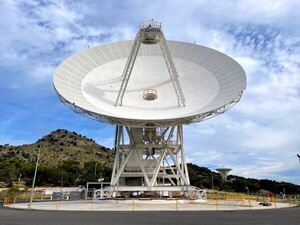
NASA Adds Giant New Dish to Communicate With Deep Space Missions
"Part of an ongoing project to grow the capacity of the Deep Space Network, which acts as a kind of interplanetary switchboard, the new antenna is the network’s 14th. There’s a powerful new member of NASA’s family of giant antennas that enable engineers and scientists on Earth to communicate with the growing number of spacecraft exploring our solar system. Called Deep Space Station 53, or DSS-53, the 111-foot (34-meter) antenna is part of NASA’s Deep Space Network (DSN). It’s now operational at the network’s facility outside Madrid, one of three such ground stations around the globe. The Madrid station is managed on NASA’s behalf by Spain’s Instituto Nacional de Técnica Aeroespacial (National Institute of Aerospace Technology). To mark the antenna’s debut, King Felipe VI of Spain attended the March 16 inauguration ceremony alongside NASA officials and dignitaries from Spain and the U.S. “NASA is honored and humbled to have the king acknowledge this important milestone by joining us at the Madrid station." [...]
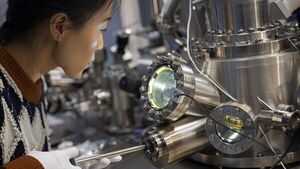
In a historic milestone, Azure Quantum demonstrates formerly elusive physics needed to build scalable topological qubits
"Microsoft’s Azure Quantum program has developed devices that can create quantum properties which scientists have imagined for nearly a century but have not been able to unambiguously produce in the real world — until now. It’s a key scientific breakthrough that demonstrates the elusive building blocks for a topological quantum bit, or qubit, which Microsoft has long pursued as the most promising path to developing a scalable quantum computer that will launch a new generation of as-yet-unimagined computing capabilities for Azure customers. “What’s amazing is humans have been able to engineer a system to demonstrate one of the most exotic pieces of physics in the universe. And we expect to capitalize on this to do the almost unthinkable — to push towards a fault-tolerant quantum machine that will enable computation on an entirely new level that’s closer to the way nature operates,” said Krysta Svore, a Microsoft distinguished engineer who leads the company’s quantum software program. “It’s never been done before, and until now it was never certain that it could be done. And now it’s like yes, here’s this ultimate validation that we’re on the right path,” she said." [...]
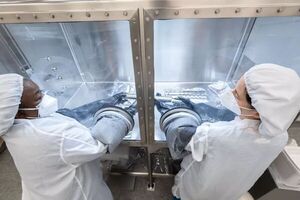
NASA is cracking open a 50-year-old Apollo 17 moon rock sample for Artemis prep
"Nearly 50 years after Apollo 17 astronauts collected rocks from the lunar surface, NASA is finally tapping their samples as it prepares for new missions to the moon. NASA set aside the Apollo 17 moon rock samples to preserve the precious samples collected in 1972 by astronauts Eugene Cernan and Harrison Schmitt (also a geologist) collected in the Taurus-Littrow Valley within Mare Serenitatis. The agency knew that science advances in the coming decades would mean there would be techniques available to study the rocks that were not available to scientists of the 1970s. With NASA's Artemis program hoping to send astronauts to the moon in 2025 (the date may be delayed to at least 2026), officials determined now would be a good time to examine a sample from Apollo 17, the last human mission on the moon to date. "The agency knew science and technology would evolve and allow scientists to study the material in new ways to address new questions in the future," Lori Glaze, NASA's director of the planetary science division, said in an agency statement March 4. Scientists unsealed the sample, dubbed the Apollo Next Generation Sample Analysis Program (ANGSA) 73001, at NASA's Johnson Space Center in Houston." [...]
Ciência e Tecnologia
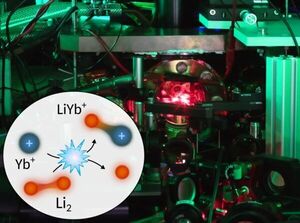
Using ions to find molecules
"When we think of ions, we usually think of single atoms that have lost or gained some electrons, but entire molecules can also become ions. In a new publication that was highlighted as an Editor’s Suggestion in Physical Review Letters this week, physicists from the University of Amsterdam, QuSoft and Stony Brook University, show that cold molecular ions can be created using a new method, and that they are a very useful tool for detecting small amounts of other, regular molecules. Trapped ions An ion is an atom or molecule with a surplus or shortage of electrons. Being charged particles, ions can be ‘trapped’ by electromagnetic fields: it is easy to keep them in a fixed position. Trapped ions constitute a promising platform for quantum computation. The reason for this is that they can be stored for a long time, and that modern lasers allow physicists to control single ions very precisely." [...]

ITMO Scientists Develop Method to Easily Synthesize Materials With Set Properties
"Researchers from ITMO’s have demonstrated the possibility of using the sol-gel method to produce various porous monolithic structures from magnetite nanoparticles. The new method can produce multifunctional materials with complex hierarchical structures, such as the xero-, cryo-, and aerogel of magnetite. Thanks to this approach, it is possible to control the composition of the resulting porous materials through the relation of their compounds’ concentrations. One of the method’s most promising applications is biomedicine – the new aerogel can be used to stop bleeding and xerogel can serve as a repository for drug transportation. About the research project Magnetic gels can serve many different properties because of their variety – for instance, in biomedicine they are the base of biosensors and in chemistry they serve as catalysts. The use of a materialdepend on its properties, which, in turn, are determined by its structure." [...]

Beam me up to 5G, Schottky
"A novel device architecture makes organic electronics applicable to 5G telecommunications. A crucial component for radio-frequency circuits using an organic material with potential for 5G applications has been developed by an international team of scientists led by KAUST. Organic semiconductors have many of the same physical properties as their inorganic counterparts, such as silicon-based semiconductors. However, organic semiconductors are made using solvent-based processing techniques, making them cheaper and more flexible. A significant drawback is that electrical charges move much slower in organic materials. This drawback is a barrier to applying organic semiconductors for use in fast applications such as radio-frequency electronics." [...]
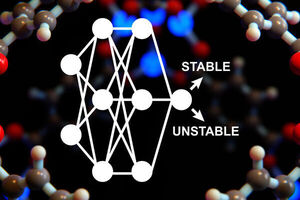
Computational modeling guides development of new materials
"Chemical engineers use neural networks to discover the properties of metal-organic frameworks, for catalysis and other applications. Metal-organic frameworks, a class of materials with porous molecular structures, have a variety of possible applications, such as capturing harmful gases and catalyzing chemical reactions. Made of metal atoms linked by organic molecules, they can be configured in hundreds of thousands of different ways. To help researchers sift through all of the possible metal-organic framework (MOF) structures and help identify the ones that would be most practical for a particular application, a team of MIT computational chemists has developed a model that can analyze the features of a MOF structure and predict if it will be stable enough to be useful. The researchers hope that these computational predictions will help cut the development time of new MOFs. “This will allow researchers to test the promise of specific materials before they go through the trouble of synthesizing them,” says Heather Kulik, an associate professor of chemical engineering at MIT." [...]
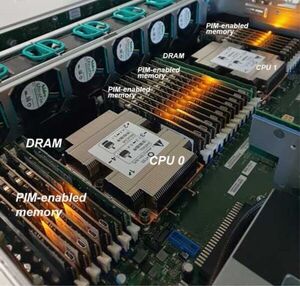
In-Memory-Computing: faster and more energy efficient
"Big Data applications require high computing performance while consuming as little power as possible. Current computer systems are reaching their limits in both areas. Professor Onur Mutlu is working on alternative systems and has just received the Intel 2021 Outstanding Researcher Award for his work. You may have heard that Moore’s law is coming to an end. This empirical observation states that computers double their performance approximately every 2 years. Alternative approaches to improve the efficiency of computing are therefore in great demand." [...]
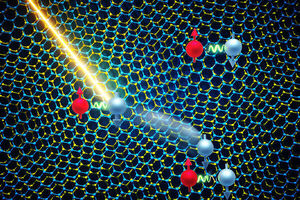
Physicists find direct evidence of strong electron correlation in a 2D material for the first time
"The discovery could help researchers engineer exotic electrical states such as unconventional superconductivity. In recent years, physicists have discovered materials that are able to switch their electrical character from a metal to an insulator, and even to a superconductor, which is a material in a friction-free state that allows electrons to flow with zero resistance. These materials, which include “magic-angle” graphene and other synthesized two-dimensional materials, can shift electrical states depending on the voltage, or current of electrons, that is applied. The underlying physics driving these switchable materials is a mystery, though physicists suspect it has something to do with “electron correlations,” or effects from the interaction felt between two negatively charged electrons. These particle repulsions have little to no effect in shaping the properties in most materials. But in two-dimensional materials, these quantum interactions can be a dominating influence." [...]
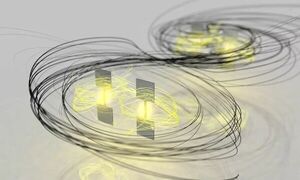
Physicist shed light on the darkness
"Experimental physicists led by Gerhard Kirchmair, together with theoretical physicists at the University of Oulu, Finland, have succeeded for the first time in controlling protected quantum states - so-called dark states - in superconducting quantum bits. The entangled states are 500 times more robust and could be used, for example, in quantum simulations. In Gerhard Kirchmair's laboratory at the Institute of Quantum Optics and Quantum Information (IQOQI) of the Austrian Academy of Sciences in Innsbruck, Austria, superconducting quantum bits are coupled to waveguides. When several of these quantum bits are incorporated into the waveguide, they interact with each other, resulting in so-called dark states. “These are entangled quantum states that are completely decoupled from the outside world,” explains Max Zanner, first author of the paper. “They are invisible, so to speak, which is why they are called dark states.” These states are of interest for quantum simulations or the processing of quantum information - corresponding proposals have been made several times in recent years." [...]

Mathematical paradox demonstrates the limits of AI
"Humans are usually pretty good at recognising when they get things wrong, but artificial intelligence systems are not. According to a new study, AI generally suffers from inherent limitations due to a century-old mathematical paradox. Like some people, AI systems often have a degree of confidence that far exceeds their actual abilities. And like an overconfident person, many AI systems don’t know when they’re making mistakes. Sometimes it’s even more difficult for an AI system to realise when it’s making a mistake than to produce a correct result. Researchers from the University of Cambridge and the University of Oslo say that instability is the Achilles’ heel of modern AI and that a mathematical paradox shows AI’s limitations." [...]
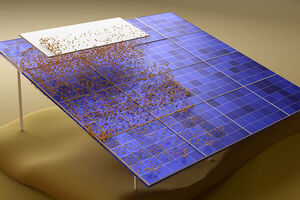
How to clean solar panels without water
"A new cleaning method could remove dust on solar installations in water-limited regions, improving overall efficiency. Solar power is expected to reach 10 percent of global power generation by the year 2030, and much of that is likely to be located in desert areas, where sunlight is abundant. But the accumulation of dust on solar panels or mirrors is already a significant issue — it can reduce the output of photovoltaic panels by as much as 30 percent in just one month — so regular cleaning is essential for such installations. But cleaning solar panels currently is estimated to use about 10 billion gallons of water per year — enough to supply drinking water for up to 2 million people. Attempts at waterless cleaning are labor intensive and tend to cause irreversible scratching of the surfaces, which also reduces efficiency. Now, a team of researchers at MIT has devised a way of automatically cleaning solar panels, or the mirrors of solar thermal plants, in a waterless, no-contact system that could significantly reduce the dust problem, they say." [...]
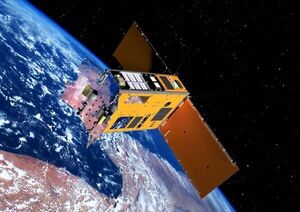
The Melbourne Space Laboratory’s first satellite preparing for launch
"The SpIRIT CubeSat, an innovative Australian and Italian nano-satellite, is on track to join the hunt for gamma ray bursts, the most powerful explosions in the universe from 2023. The satellite is being designed and built by a consortium led by the Melbourne Space Laboratory with participation from Australian industry partners and the Italian Space Agency. The lab, located in the School of Physics at the University of Melbourne, was officially opened by the Head of the Australian Space Agency and the Consul General of Italy. The Space Industry Responsive Intelligent Thermal (SpIRIT) satellite mission will contribute to cutting-edge research in high energy astrophysics, locating the source of gamma ray bursts, the universe’s most powerful explosions since the big bang. Observations from shoebox-sized SpIRIT will be combined with observations from the six other satellites which are part of the HERMES Technology and Scientific Pathfinder constellation funded by the Italian Space Agency and the European Commission. Head of the Melbourne Space Laboratory, Professor Michele Trenti, said the team is preparing to receive a HERMES mini x-ray telescope from the Italian Space Agency." [...]

WVU researcher makes magnetic reconnection breakthrough, may help predict space weather
"A West Virginia University postdoctoral researcher in the Department of Physics and Astronomy has made a breakthrough in the study of magnetic reconnection, which could prevent space storms from wreaking havoc on the Earth’s satellite and power grid systems. Peiyun Shi’s research is the first-of-its-kind in the laboratory setting and is part of the PHASMA project, a complex experiment composed of advanced diagnostics, electromagnets and lab-created plasma to reveal new details about how the universe functions. For his experiment, Shi uses a laser-based diagnostic to probe plasma. Laser beams are directed in the diagnostic and the light scatters off of electrons. The way the light scatters gives insight into how fast the electrons are moving. And because the plasma is more than 10,000 degrees Fahrenheit, the lasers allow for measuring particles without using a probe or a thermometer which would melt at such high temperatures." [...]
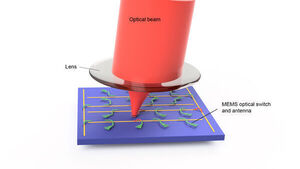
Tiny switches give solid-state LiDAR record resolution
"When Google unveiled its first autonomous cars in 2010, the spinning cylinder mounted on the roofs really stood out. It was the vehicle’s light detection and ranging (LiDAR) system, which worked like light-based radar. Together with cameras and radar, LiDAR mapped the environment to help these cars avoid obstacles and drive safely. Since then, inexpensive, chip-based cameras and radar systems have moved into the mainstream for collision avoidance and autonomous highway driving. Yet, LiDAR navigation systems remain unwieldy mechanical devices that cost thousands of dollars. That may be about to change, thanks to a new type of high-resolution LiDAR chip developed by Ming Wu, professor of electrical engineering and computer sciences and co-director of the Berkeley Sensor and Actuator Center at the University of California, Berkeley." [...]
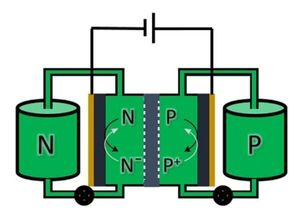
New flow battery stores power in simple organic compound
"The intermittent supply of green electricity requires large-scale storage to keep our power grids stable. Since normal batteries do not scale very well, the idea of using flow batteries, which store electricity in a fluid is attractive. However, these batteries contain rare metals and are expensive. Scientists at the University of Groningen, the Netherlands, have designed a flow battery electrolyte that may solve both problems. Their results were published in the Journal of the American Chemical Society on 8 March. Flow batteries are not very different from the everyday batteries that we use." [...]
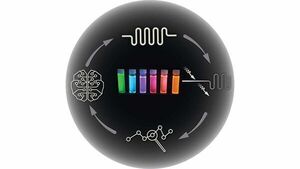
‘Self-Driving’ Lab Speeds Up Research, Synthesis of Energy Materials
"Researchers from North Carolina State University and the University at Buffalo have developed and demonstrated a ‘self-driving lab’ that uses artificial intelligence (AI) and fluidic systems to advance our understanding of metal halide perovskite (MHP) nanocrystals. This self-driving lab can also be used to investigate a broad array of other semiconductor and metallic nanomaterials. “We’ve created a self-driving laboratory that can be used to advance both fundamental nanoscience and applied engineering,” says Milad Abolhasani, corresponding author of a paper on the work and an associate professor of chemical and bimolecular engineering at NC State. For their proof-of-concept demonstrations, the researchers focused on all-inorganic metal halide perovskite (MHP) nanocrystals, cesium lead halide (CsPbX3, X=Cl, Br). MHP nanocrystals are an emerging class of semiconductor materials that, because of their solution-processability and unique size- and composition-tunable properties, are thought to have potential for use in printed photonic devices and energy technologies. For example, MHP nanocrystals are very efficient optically active materials and are under consideration for use in next-generation LEDs." [...]

Tiny battery-free devices float in the wind like dandelion seeds
"Wireless sensors can monitor how temperature, humidity or other environmental conditions vary across large swaths of land, such as farms or forests. These tools could provide unique insights for a variety of applications, including digital agriculture and monitoring climate change. One problem, however, is that it is currently time-consuming and expensive to physically place hundreds of sensors across a large area. Inspired by how dandelions use the wind to distribute their seeds, a University of Washington team has developed a tiny sensor-carrying device that can be blown by the wind as it tumbles toward the ground. This system is about 30 times as heavy as a 1 milligram dandelion seed but can still travel up to 100 meters in a moderate breeze, about the length of a football field, from where it was released by a drone. Once on the ground, the device, which can hold at least four sensors, uses solar panels to power its onboard electronics and can share sensor data up to 60 meters away." [...]
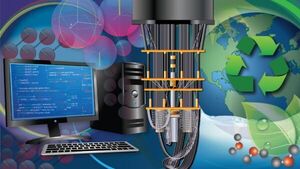
Toward a Quantum Computer That Calculates Molecular Energy
"Researchers at Columbia and Google Quantum AI have developed an algorithm that uses the most quantum bits to date to calculate ground state energy, the lowest-energy state in a quantum mechanical system. The discovery could help make it easier to design new materials. Quantum computers are getting bigger, but there are still few practical ways to take advantage of their extra computing power. To get over this hurdle, researchers are designing algorithms to ease the transition from classical to quantum computers. In a new study in Nature, researchers unveil an algorithm that reduces the statistical errors, or noise, produced by quantum bits, or qubits, in crunching chemistry equations. Developed by Columbia chemistry professor David Reichman and postdoc Joonho Lee, with researchers at Google Quantum AI, the algorithm uses up to 16 qubits on Sycamore, Google’s 53-qubit computer, to calculate ground state energy, the lowest energy state of a molecule." [...]

Stackable ‘holobricks’ can make giant 3D images
"Researchers have developed a new method to display highly realistic holographic images using ‘holobricks’ that can be stacked together to generate large-scale holograms. The researchers, from the University of Cambridge and Disney Research, developed a holobrick proof-of-concept, which can tile holograms together to form a large seamless 3D image. This is the first time this technology has been demonstrated and opens the door for scalable holographic 3D displays. The results are reported in the journal Light: Science & Applications. As technology develops, people want high-quality visual experiences, from 2D high-resolution TV to 3D holographic augmented or virtual reality, and large true 3D displays. These displays need to support a significant amount of data flow: for a 2D full HD display, the information data rate is about three gigabits per second (Gb/s), but a 3D display of the same resolution would require a rate of three terabits per second, which is not yet available." [...]
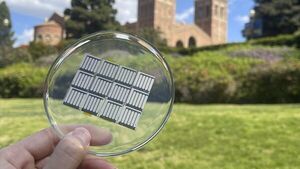
UCLA Materials Scientists Lead Global Team in Finding Solutions to Biggest Hurdle for Solar Cell Technology
"Fix in a manufacturing step of perovskite solar cells paves the way for commercialization of the high-performance, sunlight-to-electricity discovery. Materials scientists at the UCLA Samueli School of Engineering and colleagues from five other universities around the world have discovered the major reason why perovskite solar cells — which show great promise for improved energy-conversion efficiency — degrade in sunlight, causing their performance to suffer over time. The team successfully demonstrated a simple manufacturing adjustment to fix the cause of the degradation, clearing the biggest hurdle toward the widespread adoption of the thin-film solar cell technology. A research paper detailing the findings was published today in Nature. The research is led by Yang Yang, a UCLA Samueli professor of materials science and engineering and holder of the Carol and Lawrence E. Tannas, Jr., Endowed Chair. The co-first authors are Shaun Tan and Tianyi Huang, both recent UCLA Samueli Ph.D. graduates whom Yang advised." [...]

New Tool Allows Unprecedented Modeling of Magnetic Nanoparticles
"Researchers at North Carolina State University have developed a new computational tool that allows users to conduct simulations of multi-functional magnetic nanoparticles in unprecedented detail. The advance paves the way for new work aimed at developing magnetic nanoparticles for use in applications from drug delivery to sensor technologies. “Self-assembling magnetic nanoparticles, or MNPs, have a lot of desirable properties,” says Yaroslava Yingling, corresponding author of a paper on the work and a Distinguished Professor of Materials Science and Engineering at NC State. “But it has been challenging to study them, because computational models have struggled to account for all of the forces that can influence these materials. MNPs are subject to a complicated interplay between external magnetic fields and van der Waals, electrostatic, dipolar, steric, and hydrodynamic interactions.” Many applications of MNPs require an understanding of how the nanoparticles will behave in complex environments, such as using MNPs to deliver a specific protein or drug molecule to a targeted cancer affected cell using external magnetic fields. In these cases, it is important to be able to accurately model how MNPs will respond to different chemical environments." [...]

Models for molecules show unexpected physics
"Rice engineers show spinning magnetic particles surprisingly follow thermodynamic laws Small spheres suspended in a liquid move enough like molecules that the physics for one can be used to mimic the physics of the other. That’s why the discovery of some unusual physics in colloids -- particles dispersed in a solution such as milk, for example -- could be of interest to researchers who study biological interactions. Chemical and biomolecular engineer Sibani Lisa Biswal and postdoctoral fellow Kedar Joshi of Rice University’s George R. Brown School of Engineering found that when a colloid -- in this case, a suspension of micron-sized paramagnetic particles -- is jostled with a magnetic field, it still tends to seek its lowest-energy state in the same way that gas and liquid systems do. “It’s like trying to blow a bubble in an odd shape,” Biswal said. “It always goes back to a sphere.” Their finding, detailed in the Proceedings of the National Academy of Sciences, doesn’t exactly challenge Kelvin’s equation, which describes thermodynamic interactions between liquids and gases. But it does stretch the equation a bit." [...]

Launching robots into lunar caves
"A hundred meters below the surface of the moon lie caves untouched by humans. They were discovered about ten years ago, but space agencies want to send robots to investigate these mysterious cavities before astronauts venture in. “On the moon’s surface, the temperature is 150 degrees above zero during the day and 150 degrees below zero at night,” says Lucas Froissart, who recently completed a Master’s degree in mechanical engineering at EPFL. “In these subterranean caves, which can be reached through natural, vertical pits, the temperature is –30 degrees and there’s no radiation. Since the climate is constant and tolerable for human beings, these tunnels could conceivably serve as base camps.” Round robots During his Master’s program, Froissart landed an internship at the Japan Aerospace Exploration Agency (JAXA). Because of the pandemic, however, he couldn’t go to Tokyo." [...]
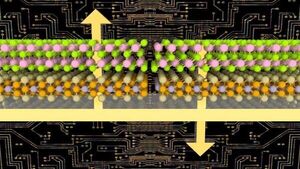
Together We’re Stronger: Developing A New Layered Material For Future Electronics
"A new RMIT-led study stacks two different types of 2D materials together to create a hybrid material providing enhanced properties. This hybrid material possesses valuable properties towards use in future memory and electronic devices such as TVs, computers and phones. Most significantly, the electronic properties of the new stacked structure can be controlled without the need for external strain, opening the way for use in future low-energy transistors. The result is a new potential material for multiferroic nanodevices, such as field-effect transistors and memory devices, which could operate using much less energy than current silicon-based electronics as well as making electronic components smaller. Atomically thin building blocks The work uses a structure comprising two atomically-thin materials: a film of a ferroelectric material, and another film of a magnetic material. (Such a structure of two or more different materials is referred to as a "heterostructure.")" [...]
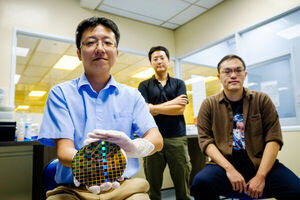
New technique opens door to cheaper semiconductors, higher chip yield
"Scientists from the NTU Singapore and the Korea Institute of Machinery & Materials (KIMM) have developed a technique to create a highly uniform and scalable semiconductor wafer, paving the way to higher chip yield and more cost-efficient semiconductors. Semiconductor chips commonly found in smart phones and computers are difficult and complex to make, requiring highly advanced machines and special environments to manufacture. Their fabrication is typically done on silicon wafers and then diced into the small chips that are used in devices. However, the process is imperfect and not all chips from the same wafer work or operate as desired. These defective chips are discarded, lowering semiconductor yield while increasing production cost. The ability to produce uniform wafers at the desired thickness is the most important factor in ensuring that every chip fabricated on the same wafer performs correctly." [...]
Documentação
A documentação é parte essencial do processo de aprendizagem e a Internet além de artigos interessantes de explorar também tem alguma documentação em formato PDF interessante de ler. Todos os links aqui apresentados são para conteúdo disponibilizado livremente pelo editor do livro.
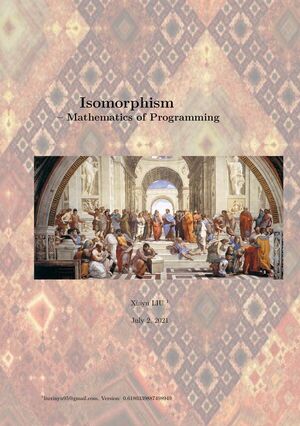
Isomorphism -- Mathematics of Programming
"This interesting story reflects an important mathematical idea, isomorphism. A difficult problem can be transformed to an isomorphic one, which is mathematical equivalent and easy to solve. A line of 9 numbers corresponds to a 3 x 3 grids; the sum target of fifteen corresponds to one of the rows, columns, and diagonals; Lo Shu pattern corresponds to magic square of order 3. This is what this book intents to tell: programming is isomorphic to mathematics. Just like in art and music, there are interesting stories and mathematicians behind the great minds. There is another further idea in this story: under the surface of the problem hides the theoretical essence, which is abstract and need to understand." [...]
Projetos Maker
Diversos Projetos interessantes.
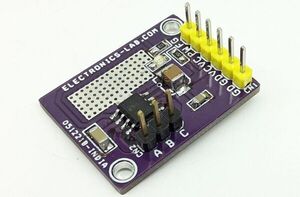
3-Phase Brushless DC Sinusoidal Sensorless Fan Motor Driver
"Driving a low current 3 phase brushless Sensorless DC motor is very easy with this project. This Full-wave BLDC driver project is capable to drive low current brushless fan motor without a hall sensor. 180° sinusoidal drive, high torque output, and silent drive are a few key features of the project. Due to their adaptive features and wide power-supply range capabilities (3 to 12V) they are intended to cover a wide range of motor characteristics while requiring no external tuning from the user. Speed control can be achieved through either power supply modulation or pulse-width-modulation (using the PWM digital input pin5 of CN1). Due to the compact packaging and minimum bill-of-material (power transistors incorporated, no Hall sensor, no external tuning), the project is best suited for low-cost fan applications requiring high efficiency and low acoustic noise, such as CPU cooling fans." [...]

Magnetic Levitating Lamp
"The magical Arduino-powered magnetic levitating lamp. A fully 3DPrintalble project for beginners. For me, it was an exploration as a beginning designer on how you can work with magnets and make something float out of nowhere. My goal was for people to be amazed the first time they see it working. Interested in what I do more? follow my Instagram!" [...]

Make a Remote Temp Sensor with Permanent Display inside your House
"Most of us use a phone app to see the temperature outside - which is fine if you don't mind receiving a reading from a sensor located at a meteorological station somewhere nearby. And when we finally do set up our own IoT sensors, to see them, we need to open an app, or log onto a webpage. No device needed But what if you want to know the temperate outside your own house without opening a device? You want your outside temperature to be displayed permanently inside your house so that it's visible whenever you want, and anywhere you want to see it. (Even in multiple rooms...) This post explains how to do it. A temp sensor outside sends its reading to a screen inside the house." [...]
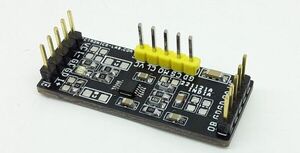
SPI Programmable-Gain Amplifier with Input VOS Trim and Output OPAMP
"The project presented here is an SPI programable Gain Amplifier using MAX9939. The MAX9939 is a general-purpose, differential-input programmable-gain amplifier (PGA) that is ideal for conditioning a variety of wide dynamic range signals such as those found in motor current-sense, medical instrumentation, and sonar data acquisition applications. It features SPI-programmable differential gains from 0.2V/V to 157V/V, input offset-voltage compensation, and an output amplifier that can be configured either as a high-order active filter or to provide a differential output. The PGA is optimized for high-signal bandwidth and its gain can be programmed to be 0.2V/V, 1V/V, 10V/V, 20V/V, 30V/V, 40V/V, 60V/V, 80V/V, 119V/V, and 157V/V. Precision resistor matching provides extremely low gain tempco and high CMRR. Although the MAX9939 operates from a single supply VCC between 2.9V to 5.5V, it can process signals both above and below ground due to the use of an input level-shifting amplifier stage." [...]
Vintage Rotary Phone MIDI Controller
"I’ve wanted to do something musical with a vintage rotary telephone for a while now, so when I happened to come across one in a charity shop, I jumped at the chance to have a go! Be warned: there are many “vintage styled” modern phones with a pile of modern electronics inside. This is not one of those – this is a genuine original phone. You can easily tell if you get inside it – the electronics definitely look like something from the 70s and 80s. On getting it home, I discovered that this one had been properly converted to be (still) usable on the UK phone system, so rather than my original plan of gutting it and adding an Arduino (like the majority of tutorials and projects you’ll find on the Internet), I wanted to find a way to use it without changing any of the circuitry or wiring inside. This means trying to find a way to use it from the plug-in phone socket only." [...]

ArduinoPiMachine
"An Arduino Nano assembly equipped with a 4 digits 7-segments led display which will, while powered, keep calculating Pi digits and scrolling through the display, like a window scrolling left to right through the infinitude of Pi digits. For that task, I’m using Xavier Gourdon algorithm described in his “Computation of the n-th decimal digit of π with low memory” paper and the Xavier Gourdon and Pascal Sebah paper called “N-th digit computation” that comes with a nice C++ implementation example that I ported to Arduino framework" [...]

Arduino DCC Decoder
"Modern model railroads are digitally controlled using a Digital Command Control (DCC) protocol similar to network packets. These data packets contain device address and instruction set that is embedded in the form of AC voltage and fed to train track to control locomotives. The great advantage of DCC over analog DC control is that you can independently control the speed and direction of many locomotives on the same train track as well as control many other lights and accessories using that same signal and voltage. Commercial DCC decoders are available on the market however their cost can add up pretty quickly if you have a lot of devices to control. Luckily you can build a simple Arduino DCC decoder yourself to decode DCC signal and control up to 17 LEDs / accessories per each DCC decoder. The DCC signal is an alternating voltage (AC) usually 16V, depending on your DCC controller." [...]
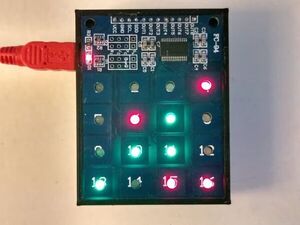
Touch Tic-Tac-Toe
"A 4x4 Tic-Tac-Toe game using a 4x4 touch pad and a ATtiny3216 CPU A while back I built my Touch-A-Mole game which is a version of Whack-A-Mole game that uses a 4x4 capacitive touch pad with LEDs mounted in the middle of each touch pad. As I was building it, I thought that if I replaced the single color LEDs with bi-color LEDs, I could turn it into a version of Tic-Tac-Toe. Design I choose to use a ATtiny3216 microprocessor as the brains of the game. It has sufficient pins to control the LEDs, buttons and speaker. It can run at 20MHz and has 32k of Flash and 2k of RAM. The bi-color LEDs are common cathode and the anodes are connected in columns and via a current limiting resistor to a pin on the ATtiny3216." [...]

SPY Anti-theft Camera In LED BULB- ESP32CAM
"A anti theft SPY Wi-Fi camera using ESP32 board inside a led bulb cover. And making a reliable power supply for this. Hi guys, Today we are going to make a SPY camera using ESP32-CAM. I have some ideas to install that camera in a Led bulb cover or phone charger. Because some of the products related to this is also available on amazon. But I want to see the data over Wi-Fi or Internet." [...]

PALPi Lite Edition
"Made yet another Raspberry Pi Based Retro Game Console The IDEA here was to make a portable handheld gaming console that can run RETRO Games like Contra, Pokemon, Super Mario ETC. For Display, I've used a 4 inch Car Monitor Display which is controlled by Composit PAL output. As for the emulation OS, I used RECALBOX as it comes with many preinstalled games. In this article, I'm gonna show you guys the whole built process for this Retro Game Console. MATERIALS Following are the things I used in this built- - Custom PCB (which was provided by PCBWAY) - IP5306 IC - 10uf 1206 Package Capacitor x8 - 2R 0805 Package x1 - 1K 0603 Package x2 - 10uH Inductor x1 - SMD Button x1 - Indicator LEDs x4 - THT USB Micro Port x1 - Li-ion Cells 3.7V 2600mah - Female Header pins Con40 x1 (or use two CON20 Pin) - Toggle switch x13 - Raspberry Pi Model 3B+ - 4 inch PAL Display (salvaged from CAR MONITOR) - 3D Printed Body - DC Barrel Jack - 5V Barrel Adaptor (for charging the Li-ion cell)" [...]

How to Make the SmartBox V.2
"This project will show you how to create the SmartBox V.2, a new smart and funny data/clock station. Introduction This is a review of my first SmartBox that I made a few years ago, when I used a OLED little screen. This version is way more useful, complexe and easy-to-use on a daily basis. It includes : A 3.2" TFT screen, bigger than other ones used before on my previous projects A kind of "personnal assistant" that expresses itself in the form of a smiley face : it changes emotion and expression after a while to give the SmartBox a lively look More sensors : DHT11 for temperature and humidity, MQ-05 for buthane, alcoohol and smoke levels, a photoresistor for light level A (true) clock : a DS3231 The possibility to navigate between menus using a "Back" button In a nutshell, it's more aesthetically pleasing and easier to use and to make. " [...]

Car game with Arduino and I2C LCD Display!
"A fast, simple and funny game, using an I2C LCD Display, based on the jumping game. The Reason Sometimes I wan't to make a game, but I don't know exactly how to. I was searching for some games using a LCD display and buttons in Project Hub, that is, a jumping game using a button. Based on this, I modified this game to make a car game. Idea The Idea is simple: making a fast car game using an I2C LCD Display, instead of these common LCDs Displays, because you need less wiring and don't need to fit it on a breadboard. The button will activate the car, doing it go up." [...]

Arduino flicker meter-Determining the quality of light bulbs
"Numerous studies have shown that flickering, Although high frequency and then totally invisible, It can also cause headaches, eyestrain... This time I will sho you how to make a device that can determine the quality of the bulbs, from the point of view of their flicker. The quality also depends on the spectrum of light they emit, but we will discuss this in one of the following videos. Incandescent, halogen or fluorescent lamps (as well as LED if poorly designed), turn on and off a hundred times a second and produce light with a flicker at a certain frequency. Numerous studies have shown that flickering, Although high frequency and then totally invisible, It can also cause headaches, eyestrain and nausea. Commercial flickering measuring instruments are very expensive (from a few hundred to several thousand dollars), and we can make it for about ten dollars." [...]
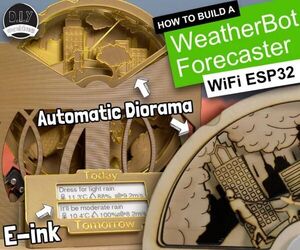
WeatherBot - a Motorised Weather Machine | 3D Printable, ESP32 & OpenWeatherMap
"How to build your own Weather Forecasting Theatre with ESP32 Meet WeatherBot, my WiFi connected weather forecasting machine. WeatherBot retrieves a local forecast from OpenWeatherMaps and then shows you tomorrows weather with a motorised mini diorama. It automatically updates every few hours (you can set your own update interval) and shows a hyper-local forecast based on longitude and latitude. The additional 2.9" e-ink display provides a more precise insight into both todays and tomorrows weather patterns without the distraction and brightness of a more traditional display. In the photos above you can see two that I built. The white one had its white parts 3D printed and the wooden parts laser cut on my Snapmaker from some 3mm Birch Plywood." [...]

Electronic Spirit Level
"An electronic spirit level using 'Motion Gestures' to get things horizontal OR to the slope of your choice! This project uses an MPU6050 motion sensor to act as a Spirit Level using some RGB LEDs to indicate offset from level. The real fun comes with the addition of 'Motion Gesture' detection to allow the Spirit Level to be re-levelled about an arbitrary slope. This then becomes the 'Null' level which the Spirit Level measures against. This allows you to check that different surfaces are at the same slope rather than simply horizontal. This is a SweetMaker StrawberryString project building on the StrawberryString hardware configuration and the SweetMaker framework." [...]
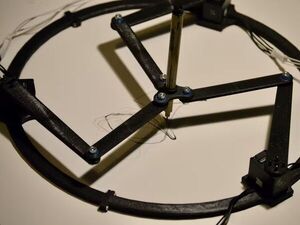
3R Planar Art Robot
"This is a 3R Planar robot that I am using to create generative art. I wanted to attempt to create a piece of generative art like Vera Molnar, the issue is how do you physically do that? The answer came in the form of a 3R planar robot that I found on the internet. So then I CADed up my own and off I went. It uses three Dynamixels around the circumference of a 12inch circle. I was heavily influenced by the Robotis OpenManipulator, but wanted to make my own that was more affordable and for the most part easier to use." [...]

Powering a ProMini logger for One Year on a Coin Cell
"The EDU build we released in 2020 provides remarkable flexibility for courses in environmental monitoring. However an instructor still needs to invest about five days ordering parts, testing components, and preparing kits for a 15-20 seat course being run remotely. (only 1/2 that is needed for in-person courses where the students pin & test the parts themselves) While that’s not unusual for university-level lab based subjects it is something of a stretch for high school teachers. And thanks to COVID chip shortages, many modules that were only 99¢ at the beginning of this project could now set you back $5 each. So with all that in mind, we’ve continued development of a ‘lite’ version of our logger with the lowest possible prep. That new baby is now ready for release with data download & control managed through the IDE’s serial monitor window." [...]
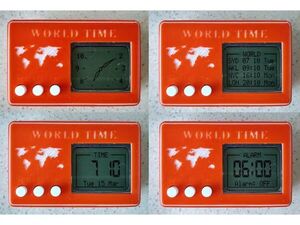
World Alarm Clock
"This small battery powered clock can be configured to display as a analog clock, digital clock, world clock or as a digital alarm clock. This clock is similar to the Nokia Analog Digital Alarm Clock that I built a few years back. It used a ATtiny1614 microprocessor (16k Flash, 2k Ram). Unfortunately it didn't have sufficient Flash memory to hold all of the feature set. This time I used a ATtiny3216 microprocessor. This has twice the Flash memory and it allowed me not only to incorporate the previous feature set but to add the current time in selectable cities around the world." [...]

RP2040 Doom
"Given a new platform it is only natural to think of porting Doom to it. With 264K of RAM, two CortexM0+ CPUs and a decent clock speed, the RP2040 is certainly not the tightest platform Doom has ever been ported to - although at <$1 it is probably one of the cheapest - so I wanted to set my self a more aggressive set of goals: Everything should match the original game experience, i.e. all the graphics at classic 320x200 resolution, stereo sound effects, OPL2 music, save/load, demo playback, cheats, network multiplayer… basically it should feel like the original game. It should run on a Raspberry Pi Pico. This really tightens things up a lot, as there is only 2M of flash for all the code and data. Nevertheless, I decided that all 9 levels of the shareware DOOM1.WAD should be playable on the Pico in a single binary." [...]

Bluetooth Controlled Car With Arduino Uno
"Build a car that can be controlled via smartphone using bluetooth communication" [...]

3D Printed Color Nipkow Display
"An Arduino based mechanical color display fully 3D-printed. I wanted to create a mechanical color Nipkow display based on Arduino which can be made without complex mechanical machining. So I decided to design and 3d-print all necessary components - including the Nipkow disk itself. It's easily reproducable for everyone who has a 3d printer and is interested in a bit more challenging Arduino projects. Below project description provide a step-by-step instruction how to build. The disk included in this project produces an 32x32 pixel image with 18bit/pixel color-depth (RGB666)." [...]

ZX80/81 Project
"Recreation of a Sinclair ZX81 (dual rom 80/81) based on Grant Searle's project. The Sinclair ZX81 was my first computer, I learned how to program (in basic) using this machine in late 80's. It's a master piece of simplicity and ingenuity. Of course, the ZX Spectrum brought colors and sounds but even the ZX81 had expansions like Chroma and Zonx. I believe that every hobbyist who would like to learn how to develop their own projects should start by studying this machine as it presents a simple and easy way to understand a computer architecture. ... and... yes... that's exactly what I did :) I started designing retro computers in January 2021." [...]
Secção Videos
Videos interessantes.
That's all Folks!




